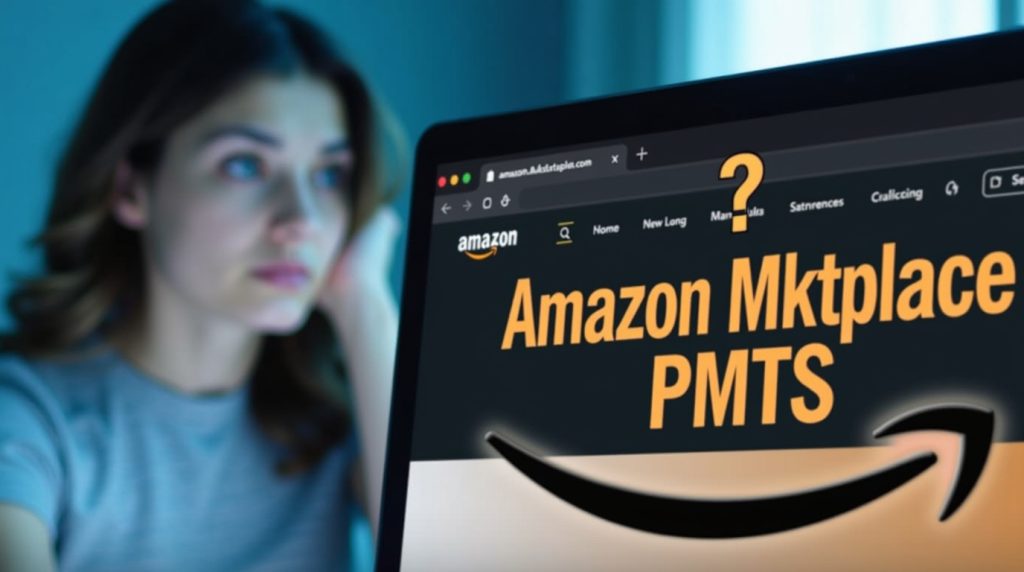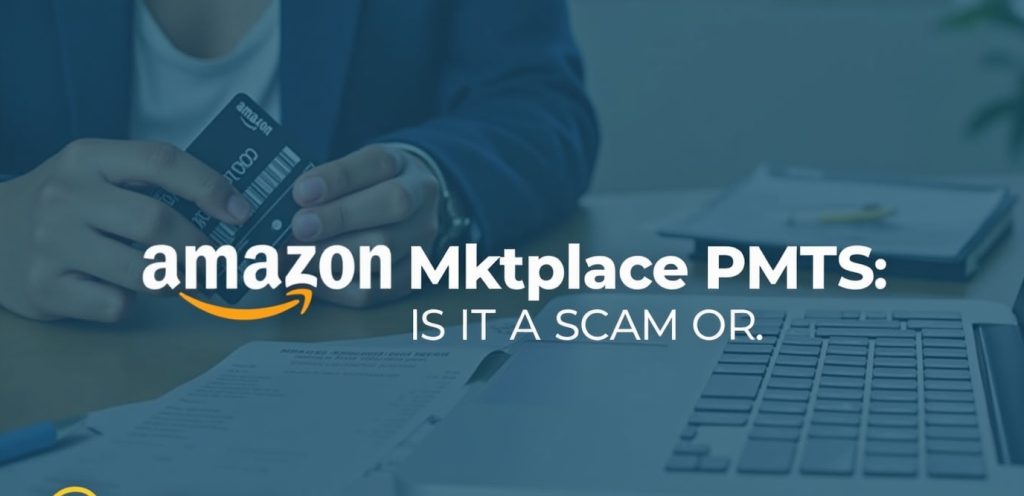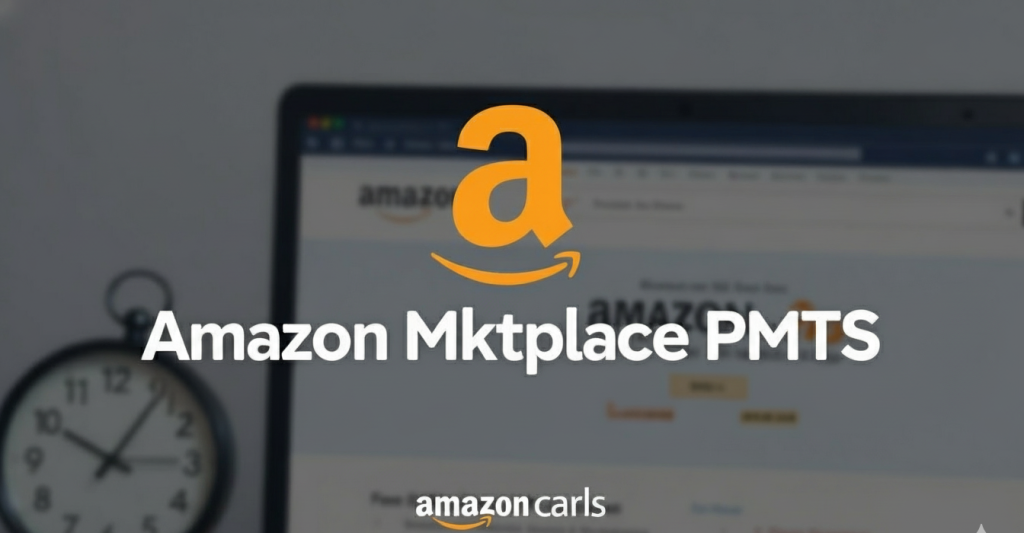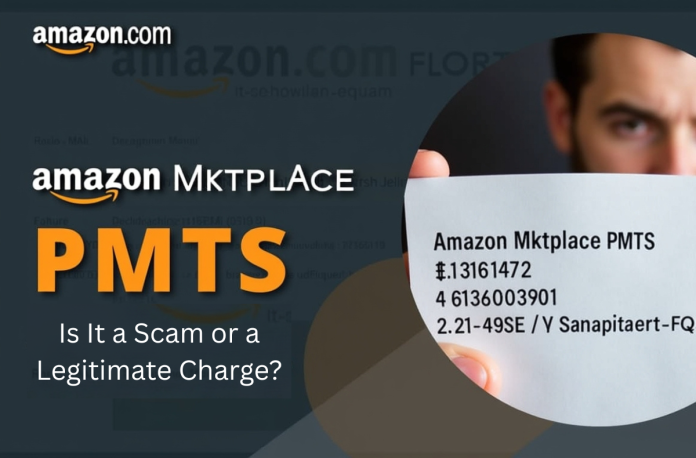Have you ever spotted a charge labelled “Amazon Mktplace PMTS” on your credit card or bank statement and had no idea what it meant? You are certainly not alone. Every day, thousands of Amazon users encounter unfamiliar billing terms, leading to immediate confusion and worry about potential fraud. The anxiety sparked by cryptic statements is a legitimate consumer concern. The good news is that this charge is almost always legitimate. Amazon’s robust payment infrastructure handles it directly.
However, confusing charges like this underscore the constant need for proactive digital financial security. Millions of consumers experience anxiety over cryptic charges each year, highlighting the need for verification. We will guide you through exactly how to quickly and safely confirm the origin of every charge, offering a unique, three-step forensic investigation checklist to identify the precise source and resolve the confusion immediately.
Key Takeaways
- The charge labelled ‘Amazon Mktplace PMTS’ refers to Amazon Marketplace Payments, indicating authorized transactions processed by Amazon.
- Confusion over this charge often stems from the distinction between Amazon Retail and Amazon Marketplace, where third-party sellers operate.
- To investigate unrecognized charges, users should follow a three-step forensic checklist that focuses on subscriptions, linked accounts, and payment agreements.
- Many unknown charges arise from forgotten subscriptions, digital purchases, or fees related to shared accounts or services like AWS.
- To manage recurring payments and refunds, users must navigate Amazon’s platform and contact customer service for assistance when needed.
Table of Contents
- What “Amazon Mktplace PMTS” Really Means?
- How the Marketplace Differs from Amazon Retail?
- Decoding Amazon’s Technical Billing Descriptors
- The 3-Step Forensic Investigation Checklist
- Top 5 Reasons your Amazon Mktplace PMTS Charge is Unrecognized
- Handling Amazon Mktplace PMTS Disputes and Refunds
- Securing Your Account Against Unauthorized Use
- Conclusion
- FAQs
What “Amazon Mktplace PMTS” Really Means?
When a payment appears with the term Amazon Marketplace Payments, the reader is looking at a specific financial designation used by the retail giant. PMTS is essentially the banking industry abbreviation for “Payments”. Therefore, the full term stands for Amazon Marketplace Payments. Amazon’s core billing system officially processed the money transfer, confirming its legitimacy.
This particular charge on a statement is a key indicator. Amazon’s authorized billing services instantly verify the transaction, showing it’s not a random charge, malware, or identity theft but an internal or mistakenly approved payment processed through the platform. Understanding the Amazon Mktplace PMTS meaning is the first step toward reducing anxiety and finding the payment’s source.
How the Marketplace Differs from Amazon Retail?
The root of the confusion surrounding the ambiguous charge often stems from how Amazon organizes its massive retail ecosystem. Amazon.com operates under two main commercial components. The first is Amazon Retail, where the company sells products directly from its own inventory. Charges for these items usually appear on statements as “AMAZON” or “Amazon.com” because Amazon is both the seller and the processor.
The second, and more complex, component is the Amazon Marketplace. This is the massive platform that allows millions of third-party sellers, including independent vendors and small businesses, to list and sell their products alongside Amazon’s own listings. When a customer purchases from one of these third-party merchants, Amazon acts solely as the payment processor. This handling of the transaction on behalf of the seller results in the mktplace PMTS Amazon descriptor appearing on the bank statement. This necessary lack of clear merchant identification is a significant reason users experience anxiety about unknown charges.
Decoding Amazon’s Technical Billing Descriptors
To properly investigate an unknown fee, a consumer must become a financial detective. Analyzing the full charge description on the bank statement provides the necessary initial clues.
Understanding AMZN.COM/BILL and State Suffixes
The AMZN.COM/BILL portion of the descriptor is a general reference that directs users to Amazon’s online billing inquiry portal. Users must log in to view transaction details, but the suffixes in the link play a key role in confirming the charge.
Common suffixes, such as /WA or /US, are often misleading because they do not reflect the customer’s physical location. Instead, they indicate the legal entity location or headquarters through which Amazon routed the transaction. For example, the Amazon Mktplace PMTS amzn.com/bill wa charge means the payment was processed through Amazon’s central Washington-based billing system, where their headquarters are located. Similarly, the Amazon Mktplace PMTS amzn.com/bill US code confirms that the charge originated within the domestic Amazon system. These codes are technical identifiers that confirm legitimacy.
POS Debit Amazon Mktplace PMTS vs. Credit Card Charges
Understanding the whole payment method details is also critical. When a statement includes the term POS debit Amazon Mktplace PMTS, the reader is looking at a Point of Sale Debit designation. This is a crucial distinction that makes the transaction behavior distinct from a credit charge.
A POS debit transaction withdraws funds directly from the user’s bank account, settling faster than credit card payments. That speed can feel alarming since the money leaves instantly. If it appears as an Amzn Mktplace PMTS charge on a credit card, the payment uses a credit line instead.
Furthermore, sometimes a user sees a small charge designated as a debit card authorization, Amazon Mktplace PMTS. Amazon places a temporary hold to check if funds are available before starting a digital service or shipping an item. It’s just a pre-charge check, not a real purchase.

The 3-Step Forensic Investigation Checklist
When facing an ambiguous Amazon Mktplace PMTS bill, simply checking the standard order history is usually insufficient. The actual purchase often resides in one of Amazon’s lesser-known digital vaults or in a linked account. This unique checklist provides the necessary deep dive to locate the source.
Step 1: Scrutinizing Digital Subscriptions and Hidden Orders
The most frequent cause of an unrecognized Amazon Marketplace Payments charge is a forgotten subscription renewal or a digital purchase. These payments are often recurring and happen quietly in the background, away from physical purchase history.
The primary corrective action is to log into the Amazon account and navigate specifically to the ‘Your Memberships & Subscriptions’ page. Users must actively check for services that auto-renew, including Prime Video, Kindle Unlimited, Amazon Music Unlimited, and third-party apps subscribed to through Amazon. Additionally, the ‘Your Digital Orders’ tab should be verified. Amazon processes purchases like e-books, apps, or movie rentals as Amazon Mktplace PMTS purchase descriptions. Since they don’t show up in the regular order history, they’re easy to overlook.
Step 2: Checking Linked Accounts and Shared Payment Methods
If the charge amount is unfamiliar, the investigation must expand beyond the user’s primary profile. The charge may belong to a linked account or a family member.
Many households link payment information across multiple profiles, especially within Amazon Prime Households. This arrangement means a spouse, partner, or child might have inadvertently incurred the charge. Even small purchases or microtransactions made on shared devices like an Echo or Fire TV can automatically trigger this charge to the primary payment method. Another often overlooked source is the relationship between the retail account and an AWS (Amazon Web Services) account.
Business infrastructure costs processed through the retail payment method can appear as an Amazon Mktplace PMTS charge, requiring investigation in a separate AWS billing console.
Step 3: Verifying the Payment Agreement and Card Tokenization
This step provides the solution for the most persistent and worrying scenario: The charge appears even after canceling the physical bank card. The reason lies in payment tokenization, a legitimate security feature used by major merchants for continuity of service.
Banks often send new card details to Amazon’s tokenized system after a card is canceled or replaced. This lets recurring charges continue without interruption. Relying only on the bank to stop the charge is insufficient. To prevent this, the user must go to pay.amazon.com and review the ‘Merchant Agreements’ portal. This lists all active, ongoing payment arrangements authorized to pull funds from the account. If users find the agreement there, they need to cancel it directly. That stops future charges and clears up why a canceled card kept getting billed. This ensures long-term financial control.

Top 5 Reasons your Amazon Mktplace PMTS Charge is Unrecognized
The ultimate goal is to identify the specific cause of the debit. Most unrecognized charges come from digital services or Marketplace purchases. They’re usually the result of user oversight, not fraud.
Many consumers sign up for free trials, only to forget that the service transitions into a paid subscription, resulting in an automatic renewal charge. Services like Audible or Prime automatically seek payment unless manually cancelled.
Similarly, shipping fees, especially from third-party sellers, may appear as a separate Amazon Mktplace PMTS bill instead of being consolidated with the item purchase. The following table summarizes the five most frequent culprits behind an unexpected charge:
| Possible Causes | Descriptor Hint | Quick Verification Check |
|---|---|---|
| 1. Subscription Auto-Renewal | Recurring monthly/annual date. Appears as AMZN Digital or Amazon Mktplace PMTS amzn | Check the ‘Your Memberships & Subscriptions’ page. |
| 2. Forgotten Digital Content | Low dollar amount, often ending in .99 or .49. | Check ‘Your Digital Orders’ history. |
| 3. Third-Party Marketplace Purchase | Descriptors may be shortened or cryptic. Uses mktplace PMTS Amazon | Check standard ‘Your Orders’ history for items sold by “Seller Name” (not Amazon). |
| 4. Authorization Hold | Small, temporary charge (e.g., $1.00 or $5.00). | Wait 3-5 business days; if it disappears, it was an authorization check. |
| 5. Linked AWS/Business Fees | Often, higher charges may include a cryptic ID. | Check the AWS Billing Console if you or a family member manages cloud services. |
Handling Amazon Mktplace PMTS Disputes and Refunds
Once the source of the charge has been identified, the next priority is regaining financial control. The process for canceling recurring payments differs significantly from disputing a one-time purchase.
How to Identify and Cancel Recurring Charges
If the identified charge is a recurring subscription, the resolution must happen within Amazon’s platform, not primarily through the banking institution. To successfully cancel Amazon Marketplace Payments that are recurring, users should go to the ‘Your Memberships & Subscriptions’ page. For third-party or continuity subscription merchants, the crucial step is to navigate to pay.amazon.com and select ‘Cancel Agreement’. Since many subscriptions use a tokenized payment method (as noted in the forensic checklist), canceling the physical card won’t stop the charges. You must cancel the agreement itself.
Requesting an Amazon Mktplace PMTS Refund safely
Amazon maintains a generally flexible refund policy, especially concerning digital services or unintentionally renewed subscription fees. For services like Amazon Prime, if the benefits have not been used since the charge date, the company is usually willing to issue an Amazon Marketplace Payments refund immediately.
Always try to request a refund directly from Amazon first. Attempting to dispute the charge immediately with the bank (a chargeback) can carry risks. Initiating a chargeback can prompt Amazon to restrict or lock your account until the dispute is settled. This is why contacting Amazon support directly is the safer initial resolution strategy.
When and How to Contact Customer Service
If you can’t identify the charge or need quick help, contact Amazon customer service directly. For the fastest support regarding the Amazon Mktplace PMTS customer service number, the most effective route is using the official “Contact Us” portal while logged into the buyer account. This ensures Amazon staff can instantly verify the user’s identity and pull up relevant billing records.
For phone contact, the general Amazon customer service line is 1-888-280-4331. When calling, have the exact date and amount of the Amazon Mktplace PMTS phone number charge ready from your statement. If the charge appears as a POS debit, Amazon Mktplace PMTS, or an Amazon Marketplace PMTS on a credit card, providing the complete billing code is essential for rapid assistance.

Securing Your Account Against Unauthorized Use
Proactive security measures are essential to prevent ambiguous charges from becoming recurring financial burdens.
When to Suspect True Fraud?
While the Amazon Mktplace PMTS on a credit card descriptor is usually a sign of an internal error or oversight, consumers must remain vigilant against actual external fraud. Genuine unauthorized activity typically involves multiple, random, small charges, especially if they appear immediately after the card details were used on a questionable third-party website.
If a user has exhausted all internal verification steps and still cannot account for the Amazon Marketplace PMTS purchase, immediate action must be taken. If the activity turns out to be fraudulent, contact your bank right away to block the card and file a fraud report. Following this, Amazon’s security team should be notified.
Preventing Future Unknown Charges
Preventing the recurrence of an Amazon Mktplace PMTS unknown charge requires diligence. It begins with establishing strong account security, including two-factor authentication (2FA) and complex passwords.
Users should regularly check linked family accounts and review which devices are signed into their Amazon profile. A common cause of unknown charges is the “dark patterns” often used in free-trial sign-ups. To avoid this, users should set calendar reminders to cancel free trials before they renew, which can lead to unexpected charges. Regularly checking bank statements is also the best way to catch small recurring payments early.
Conclusion
The analysis confirms that the appearance of Amazon Marketplace PMTS on a financial statement is overwhelmingly a sign of a legitimate, though often forgotten, internal transaction processed by Amazon. It is highly unlikely to be external financial fraud. The charge is almost certainly a result of a subscription renewal, a digital content download, or a purchase from a third-party seller utilizing the Amazon Marketplace payment system.
If a charge linked to an Amazon Marketplace PMTS bill or an Amazon Mktplace PMTS contact number cannot be recognized, the recommendation is clear: do not panic. The next immediate step should be to execute the 3-Step Forensic Investigation Checklist. This involves logging into the Amazon account to review “Your Digital Orders,” “Memberships & Subscriptions,” and any active “Merchant Agreements.” By adopting this proactive, investigative approach, users maintain complete control over their accounts and swiftly resolve the mystery of the unexpected charge.
FAQs
It stands for Amazon Marketplace Payments. Banks use this official descriptor when Amazon processes payments for third-party sellers or for its own auto-renewing services, such as Prime or Music subscriptions.
To cancel a recurring charge, you must log in to your Amazon account and visit the ‘Your Memberships & Subscriptions’ page. For charges tied to continuity merchants, you may also need to cancel the merchant agreement via pay.amazon.com specifically.
This is an authorized transaction charged to your credit limit and processed by Amazon’s billing system. Familiar sources are digital content renewals, items purchased from independent Marketplace merchants, or fees for services like Amazon Prime.
Your bank statement shows this descriptor when the Amazon Marketplace completes a payment. The full code, such as Amazon Marketplace PMTS amzn.com/bill wa, is a technical identifier confirming that the charge originated from Amazon’s official Washington-based billing entity.
If someone steals or compromises your card, call your bank right away to freeze it. After that, verify your Amazon account for any newly activated subscriptions or new orders. If recurring charges continue after cancelling the physical card, you must manually revoke the merchant agreement in the Amazon Pay portal to stop the payment token from working.










